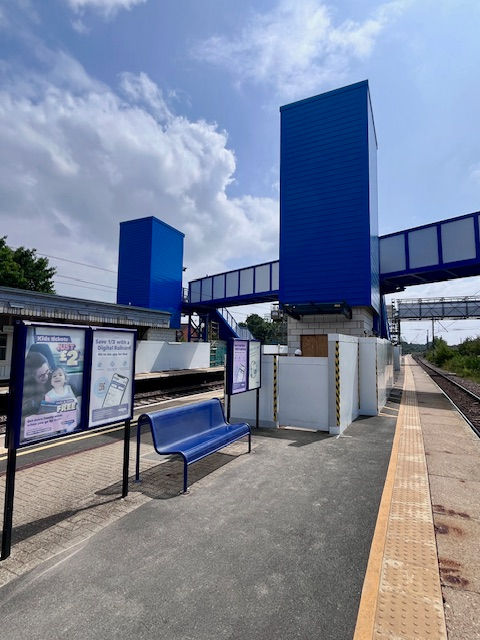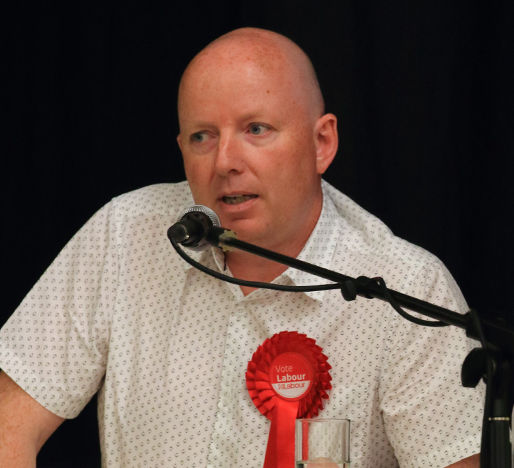S106 Funding – an open letter to Central Beds Council
- Julian Vaughan

- Nov 3, 2023
- 8 min read
Following my research into how funding received from housing developers is spent in our communities, I posted The secret world of S106 funding blog on my social media. Of course, while social media can be a useful tool, it is no substitute for actually getting in touch with the decision makers directly. As the planning department failed to come back with a response to my queries, I contacted the leader of Central Bedfordshire Council directly. The email is below in full. I will provide an update when I receive a response.
Dear Adam
Following the commencement of the recent development in Langford, 150+ houses (CB/19/00336/OUT) just South of Cambridge Road, bordering the East Coast Mainline, I started doing some investigation into how S106 funding is spent within Central Bedfordshire and the transparency and accountability of that funding. My research does raise a number of issues, that I would be grateful if you could answer. I have approached CBC’s planning department on a number of occasions, but apart from an initial contact and a promise to look into the issue I have not received a response, which is why I am forwarding it to you.
The results of this research are contained in the following blog: http://julianvaughan.blog/2023/10/31/the-secret-world-of-s106-funding/
This research also links to the provision of cycle routes across the Biggleswade, Langford, and Arlesey area, and I am pleased to see that the Council has adopted my suggestions, put to the Council in 2021, for a route that links these three areas into the Local Cycling and Walking Infrastructure Plan proposals currently out for consultation. You can read these suggestions here: http://julianvaughan.blog/2021/09/02/safe-cycle-routes-for-langford/
My questions are as follows:
1. While the Council does post data on S106 funding per parish ( for reference here: https://www.centralbedfordshire.gov.uk/info/44/planning/458/planning_obligations/2 setting out the following: date received, if unallocated, if committed, spent. However, the Infrastructure Funding Statements do not provide sufficient detail on how the money was spent and which development that spent money was received from – a link to the Infrastructure Funding Statements here: https://www.centralbedfordshire.gov.uk/info/44/planning/458/planning_obligations/8
You will be able to see that when the money comes in it is directly linked to a planning application, but when it is actually spent no such link is shown, just the amount and what the project is. This means that it is difficult if not impossible to trace the money from the start of the process – the signing of the S106 agreement, through to the end of the process – the money being spent on an infrastructure project. Further, I had to spend a considerable amount of time looking at different links and Excel spreadsheets to bring all this information together.
Q: How will the Council substantially improve the transparency and accountability of the S106 funding and spending process – and in a form easily accessible and understandable to the public?
2. From the 2021/2022 Infrastructure Funding Statement (the latest statement online) we can see that there are £45 million (image attached) of unallocated funds from previous years, some of this funding is from a number of years ago and a few of the S106 funding amounts risk being clawed back. This £45 million is a substantial increase from earlier years. Bearing in mind that the Central Bedfordshire area is in desperate need of improved infrastructure this level of unused funding is a concern. Further, this money hanging around over a number of years results in less accountability about where this money eventually ends up. I know you have personally raised concerns in the past about funding being obtained from one village or town and then spent in areas a significant distance from those areas.
Q: What steps are the Council taking to ensure that this money is spent promptly and in the locations where the development took place? Will you also provide the latest unallocated S106 funding amounts?
3. The S106 funding agreement for the development states that £80,000 is to be provided towards a scheme to provide pedestrian and cycle access over the East Coast Mainline (via the humpback bridge at the end of Edworth Road). This money has been received by the Council, but the project was de-linked from the development during discussions at a Development Management Committee Meeting in September 2019. As I set out in the blog, what is happening with this scheme is a bit of a mystery, to me as well as the Parish and Ward Councillors. However, I can see from the recently opened consultation on cycle routes in the area that there is a proposal to link up the cycle routes via improvements to the humpback bridge. This would link a proposed cycle route just to the East of the railway line running all the way up to Biggleswade with a route running through the new development off Cambridge Road in Langford onto Henlow and Arlesey.
Q: Can you advise me of the status of this project, which would bring safety as well as connectivity benefits to the area?
4. From the conversations I have had, local parish councils have little say in how the S106 funding is allocated within their areas. Parish Councils have a significant level of understanding about what their communities need, but this knowledge seems to be being ignored. This goes against what Central Bedfordshire Council set out in the Mythbuster infographic (attached) which talks about the importance of involving the relevant Parish Council at virtually every step of the process, from pre-application to completion.
Q: What steps will Central Bedfordshire Council take to improve this?
With trust in politicians at a low ebb and the lack of infrastructure in the area a hot topic, I hope you will agree that the issues discussed above are an area that needs improvement. Happy to discuss this further either on the phone or in person if it would be helpful.
Due to the interest in and importance of these issues, please regard this as an open letter.
Many thanks
Julian Vaughan
2nd November 2023
*Update, the full response received from Central Bedfordshire Council on 8th November is set out underneath the two infographics below.

A ‘myth buster’ infographic produced by Central Bedfordshire Council highlighting the involvement of local town and parish councils in the S106 allocation process.

Unallocated funding received by Central Bedfordshire Council from housing developers via S106 funding. This is an increase from £29 million two years earlier.
“Thank you for your email which has been forwarded to me for a response.
It is probably helpful if I set out some of the background by way of context about Section 106 Agreements. These are governed by a number of legal tests set out in the Community Infrastructure Regulations and are required to be demonstrated when seeking contributions and obligations. The underlying theme of these legal test are that the obligations must mitigate the impact of the development for which permission is being sought and that the mitigation being sought is evidenced for example through a Strategy or business case, I am afraid it is not simply a means to collect money for nice to have projects. The process of developing an Agreement includes seeking input from internal Council stakeholders (for instance Education and Leisure) and external consultees (for instance the ICB and National Highways) and Town and Parish Councils as they are always a consultee on planning applications. There have over the years been a series of training sessions for Town and Parish Councils and Ward Members on the process of securing Section 106 funds associated with development proposals and what can and can’t be considered.
Once an Agreement has been signed it is published alongside the planning application on the Council’s website and is therefore available to anyone to scrutinize and understand what contributions have been secured and what they are to be spent on either broadly or specifically. Once funding has been secured it is for the relevant spending officers or Departments to develop the project for which the funding has been secured and then deliver that project. If there are a number of funding streams then subject to these meeting the legal definitions in the Section 106 they can be used collectively to deliver a project identified by the spending Department or Officer. The Infrastructure Statement produced by the Council complies with the relevant legislation.
However, we are always looking to improve the accessibility and transparency of the funds held and how they have been spent. There is a project in place to move to a different reporting system and while this is currently being developed and tested it is hoped that this will offer better availability of information. However, it will need to be supported by the data from the spending areas which we will be looking to encourage. We will hopefully be able to provide the most up to date information on Sec 106 funds held soon and I will provide those to you when they are available.
A Section 106 is a legal contract between the Council and the signatories of the Agreement. Therefore we have processes and a monitoring regime which ensures that we are legally compliant when releasing funds for projects identified by the spending Departments as the Council can be challenged by the signatories of the Sec 106 if it is considered that we have released funds for projects for which they were not collected. There may well be cases that some funding secured is allocated to projects outside of a town or village in which the development occurred but for example when funds are collected to mitigate the impact of a development on education it may well be that the school for which new pupils will attend is in an adjoining settlement. Similarly, funds are secured to improve a leisure offer but this is in an adjoining settlement there are facilities that already exist and are used by the wider community, and this is not uncommon.
In terms of the Sec 106 funding held for the scheme to provide pedestrian and cycle access over the East Coast Mainline via the humpback bridge at the end of Edworth Road, I am informed by the project officer that the scheme features in this years Highways Annual Plan with a design scheduled for Q4 of 23/24 and delivery in 24/25.
I would agree completely that Parish Councils have a significant level of understanding of their communities but we have emphasised at training sessions and meetings with Town and Parish Councils that Section 106 contributions need to be evidenced if they are to be justified and secured. I am afraid it is not as simple as responding on a planning application saying this is what we would like. There needs to be evidence that an outcome is deliverable, an indication as to how much it would cost and how it is felt that it would mitigate the development being experienced by the community. This can happen in two ways, firstly through engagement in Council Strategies (which is identified on the Myth buster document you included) such as the Leisure Strategy which the Council uses as an evidence base to secure funds for Leisure purposes. Alternatively, they can invest some time in developing a project or proposal, maybe by means of a business case which is then referred in response to an individual planning application. Without this evidence, developers will not agree to contribute. We have previously undertaken a range of training sessions for Town & Parish Council’s but if it was felt that representatives of the Parish Council would benefit from a specific conversation I can see if we could facilitate this.“
Central Bedfordshire Council – Director of Place and Communities
8th November 2023






Comments